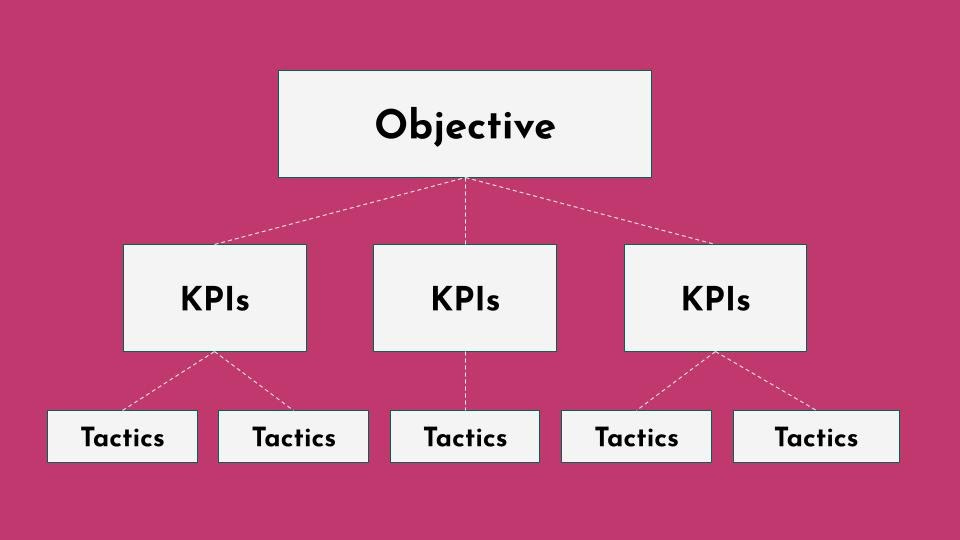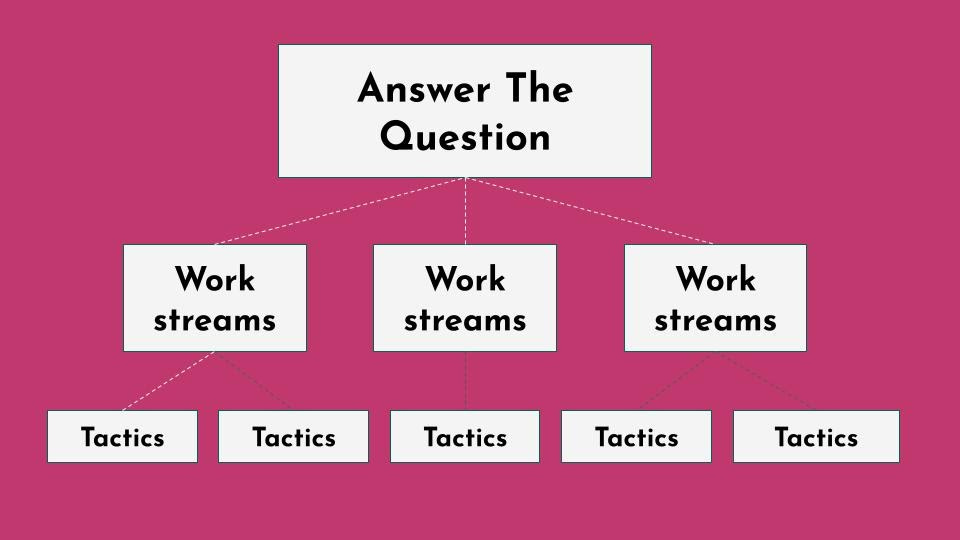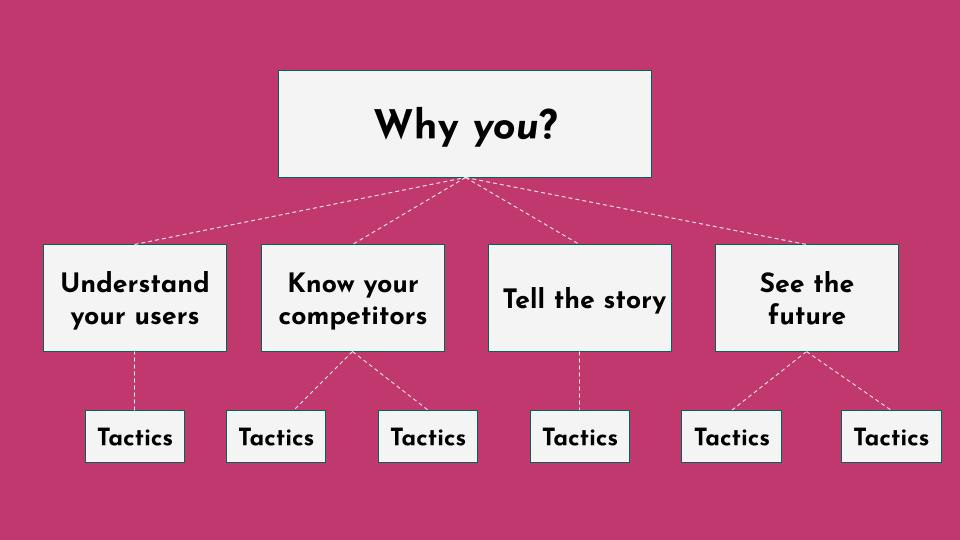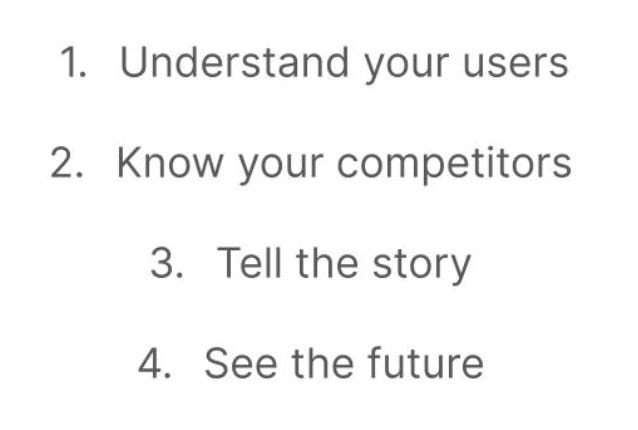Hello! 👋
In last week’s post, I promised you an agile framework for building a product marketing strategy. So I guess I’d better come up with something…
Creating a product marketing framework
A product marketing strategy is a different beast to that of your traditional marketing or growth strategy.
If you take a more conventional marketing strategy framework, there’s usually a clearly defined business goal or objective at the end of it. Like ‘Get to 30,000 paying subscribers by 2023’ or ‘Increase monthly recurring revenue by the end of the quarter.’
You’d then take this objective and agree KPIs that feed into it. Perhaps ‘We’re going to increase sign ups by X%’ or ‘Let’s reduce churn by Y%.’
Finally, you would spin up tactics or projects that you expect to make a dent on those KPIs, and ultimately feed into your top-level objective. This might be starting a referral program, or running an Instagram competition, or adding alternative forms of payment to your company’s website.
It might look something like this…
But coming up with a framework for Product Marketing is slightly trickier. And I think that’s because of the metrics.
Product marketing metrics
For product marketers, it’s near impossible to find a specific metric that can be exclusively owned by you or the wider Product Marketing team.
You might say it’s feature adoption. But this should surely be shared with your Product team?
The same could be said of product review sentiment. This is something you want Product Marketing prioritising and working on, for sure, but this has to be in collaboration with Product.
There could be a case for sales conversions. And yes product marketers are there to provide Sales teams with the insights and materials they need for pitches. But ultimately there’s only one person on the hook for this metric, and that’s the person closing the deal.
You could even suggest ‘# of product reviews’ but this is somewhat arbitrary, especially if you end up decreasing your overall review score by going out and getting lower quality reviews. 😬
On top of this, there’s the fact that Product Marketing is on the hook for a lot of the fluffy, unmeasurable stuff like positioning and messaging, which are really hard to track from a numbers perspective. (But absolutely essential!)
The question
So the way I like to think about building a Product Marketing Strategy is to base it around a question, not an objective.
What is the existential question that your product needs to answer about itself?
It will differ for every company.
At Whereby we have two different questions, dependent on the product.
For Embedded, which lets companies add white-label video calls to their websites, we’re in a brand new product category, so the question might be ‘Why would a business ever need embeddable video calls?’
Whereas for our Meetings product, we’re in a crowded space where 99% of people are already using a video meetings platform, so our question is ‘Why Whereby? Why should someone leave their current provider and give us a try?’
But it could be anything. You might be the incumbent in your product category and the question is ‘Why stay with us?’ Or it could be that you have tons of free users but hardly anyone is paying, and the question is ‘Why should someone pay for our product?’
It’s also a really good way of approaching new product launches. Take the Amazon method of writing an internal press release first, before a single line of code is written, answering the question of ‘What problem are we solving here?’
But, when in doubt, a good question to stick with is ‘Why you?’ What makes you different?
Work streams
Instead of KPIs or one-off initiatives, I think it’s better to think of product marketing as having always-on work streams that can be tapped into at any given moment.
The phrase ‘work streams’ also makes it clear that the job of a product marketer is never finished. Your user base is going to evolve over time, as is the competition, so there’ll always be new insights to collect and positioning that needs adapting. Work streams are how you keep your framework agile and adaptable - ready to pivot any time.
So, here’s an example of what your new product marketing framework could look like.
You’ll see I’ve broken the work streams out into four clear areas. These are your go-to work streams, that should be relevant for any product marketer working on a digital product.
Next week, we’ll start digging into these work streams, along with ready-to-go tactics to get you started. Until then, you can always reply to this email if you have any questions about your own product marketing challenges.
See you next week, pals!
Rory
P.S. In case you missed it, check out last week’s post on How to Build a Product Marketing Strategy.









I love this!! But how do you convince your higher ups? Example, let's say your product marketing team is led by a bigger marketing department. Everyone needs to have some sort of KPIs that are measurable. What quantitative numbers are you pulling to show you are reaching these goals?